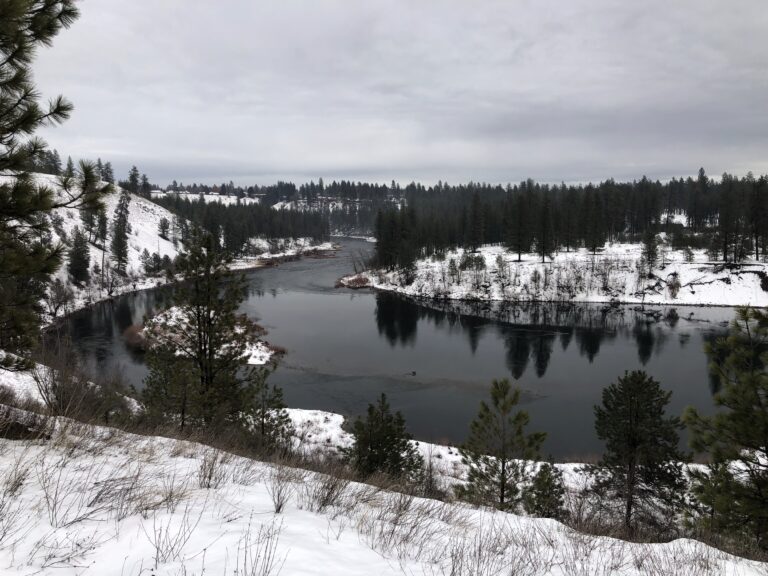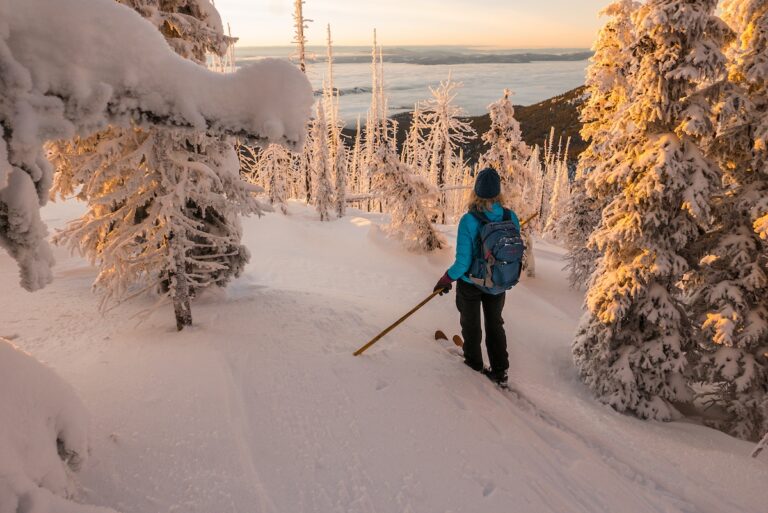By Bob Lutz
My family recently took our dogs on their first overnight backpack. While they’re used to running trails, this was a new adventure for them, and unsurprisingly they loved being out there with all the interesting sights and smells. We were jazzed they did so well, as we weren’t sure how they would handle the slow and controlled pace instead of their typical sprint-return-sprint-return routine.
So this got us thinking about next trips, and I thought it’d be interesting to share a bit of what we’ve learned. It’s also important to do your homework ahead of time before heading out with your dog. Here are 5 foundational issues to consider and know before you take your dog backpacking.
Public Lands: Where Are Dogs Allowed?
Look into whether or not dogs are even allowed where you’re going. In general, they’re allowed on U.S. National Forest trails, not on National Park trails (but okay wherever cars are permitted), and never in Wilderness areas.
In Washington State, they’re allowed on trails “but must be under physical control at all times on a leash no more than eight feet long.” Does your destination have any site-specific guidelines and/or restrictions?
Expectations: How Far Can My Dog Hike?
Don’t take your dog on a forced march without having him get some training under his collar. Some breeds will just go and go until they drop without warning (never a good thing). Dogs are like kids in many ways—they’re active in bursts, but on the move for hours isn’t necessarily their forte.
An all-day hike, while slow of pace, is long on time, and the mental and physical strain can be intense. So work up to your/his planned foray into the backcountry. This is especially important if you’re going to have him carry his own weight by packing his own gear and chow.
Supplies: What about food and water?
Yes, both are good ideas, and you won’t be surprised to learn that like you, your dog is going to need more calories and fluids than normal, maybe up to 100 percent, depending on the duration and intensity of your hike.
There are some high-energy kibble formulas worth looking into ahead of time, as the runs aren’t much fun for you or for her. These will allow you to pack more energy in less food.
Yes, dogs can get Giardia, so provide her with the same water you’re drinking. If you’re thirsty, she is too, and dogs will often drink smaller volumes more frequently if given the opportunity.



Dogs of all sizes and breeds enjoy hiking with their owners: Jennifer Hall hiking with her dog when he was a puppy (left). // Photo courtesy of Jennifer Hall; Hiking at Slavin Conservation Area (middle). // Photo: Amy McCaffree; Glen Copus with his little hiking partner (right). // Photo courtesy of Glen Copus.
Dog Gear: What else?
Foldable water/food bowls are lightweight essentials. We carry an extra water bottle that Niki and Harley have learned to drink out of. If your dog’s up to backpacking, she’s probably up to carrying a pack with her own food and other essentials, and if she’s in shape, could carry up to a third of her weight if needed.
Like your own backpack, make sure it fits her snuggly but comfortably, and start light with the packing—food (and water), bowls, long lead for camp, towel and brush, poop bags (yes, you should pack it out) and a first-aid kit.
In regards to safety and health care, make sure your canine is current with all necessary immunizations and is in good overall shape. With respect to supplies, consider carrying, at a minimum, a bandage, antiseptic (dilute your iodine to just turn the water a little brown) and antibiotic ointment, tweezers (for ticks and wound debris), and—my favorite—crazy glue for paw lacerations (of course, all of this should be in your own personal kit as well, and sharing is good).
Dog Leash: Always necessary?
The most contentious issue: to leash or not to leash? If you do a quick search, you’ll find a good number of discussions around the pros and cons of keeping your dog on a lead. Yes, dogs love to run amok, but while it may be fun for them, it can also lead to a host of problems.
Even the best-behaved dogs can go native and end up heading off-trail into who knows what. You’re then left with either calling for them until you’re hoarse or doing likewise, neither of which are good options.
There’s nothing worse than finding yourself scrambling down scree after a wounded hound that saw a chipmunk that looked like a lot of fun to play with, not to mention the chippy that’s got better things to worry about than a possessed predator it’s not familiar with. So do the right thing – leash up.
Remember that heading into the backcountry with your dog isn’t much different than going out yourself—training, the right gear, and preparation are the keys to a fun and safe trip. Backpacking can be a great way of extending the bond you have with your best canine-training buddy, and lead to lots of great adventures out there for both of you.
Originally published as “Backpacking with Dogs: Keeping Them Healthy and Happy” in the September 2011 issue of “Out There Monthly”–the precursor to “Out There Outdoors.”



Hiking and Backpacking with Dogs: Hiking in Spokane. // Photo: Shallan Knowles; Snowshoe backpacking with a husky (middle), and hiking in the eastern Washington Scablands (right). // Photos: Holly Weiler.













